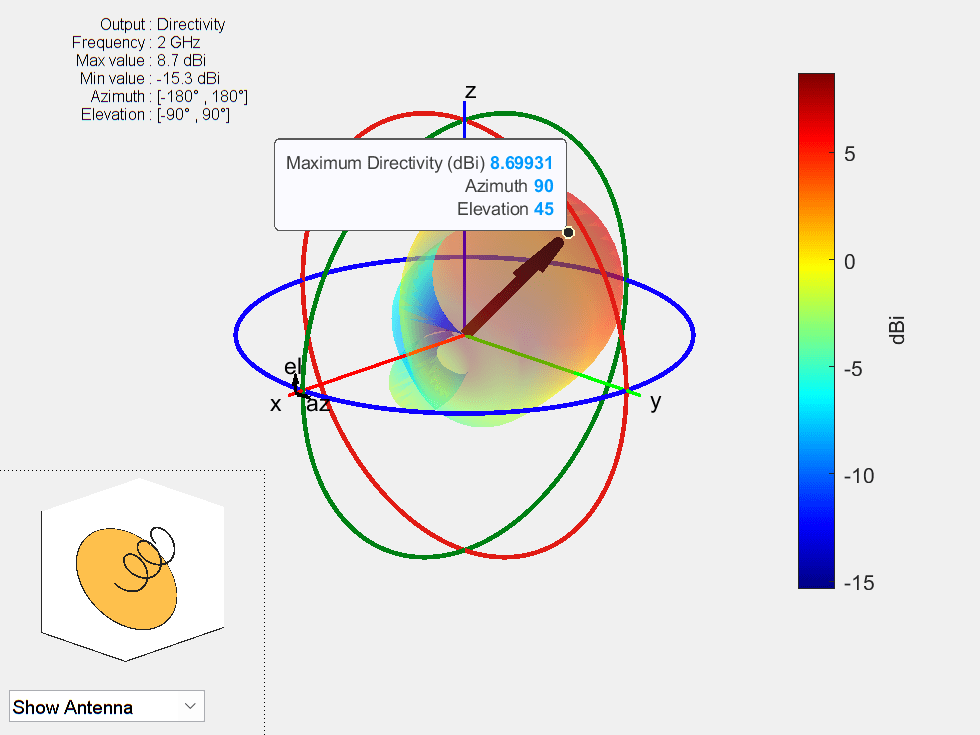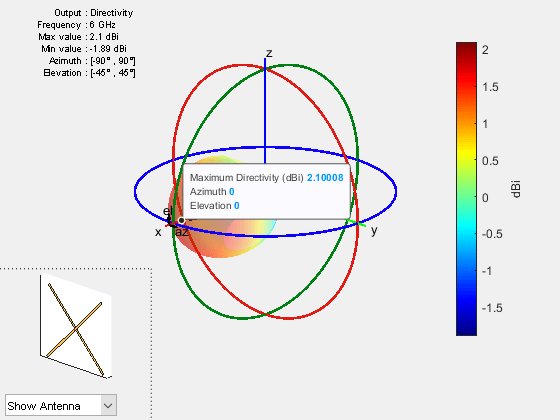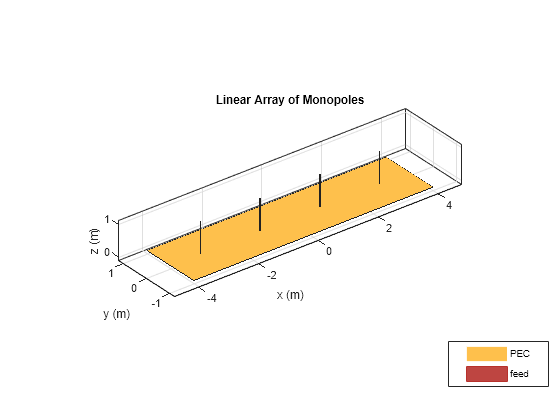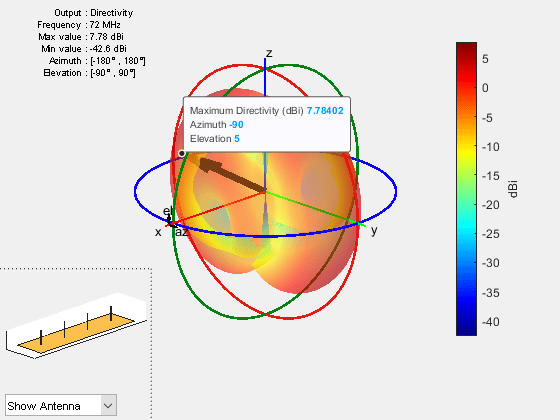peakRadiation
Calculate and mark maximum radiation points of antenna or array on radiation pattern
Since R2024b
Syntax
Description
peakRadiation(
marks the maximum radiation points on the 3-D radiation pattern of the antenna or array
specified in object,frequency)object at the frequency specified in
frequency.
Note
This function plots maximum directivity for lossless antennas and maximum gain for lossy antennas.
This function uses the
patternfunction internally to plot the radiation pattern.
rad = peakRadiation(___)
[___] = peakRadiation(___,
specifies additional options using one or more name-value
arguments. For example,
Name=Value)peakRadiation(linearArray(Element=cassegrain),12e9,ElementNumber=2)
marks the maximum radiation points on the 3-D radiation pattern of the second Cassegrain
antenna element of the linear array at 12 GHz.
Examples
Input Arguments
Name-Value Arguments
Output Arguments
Version History
Introduced in R2024b



